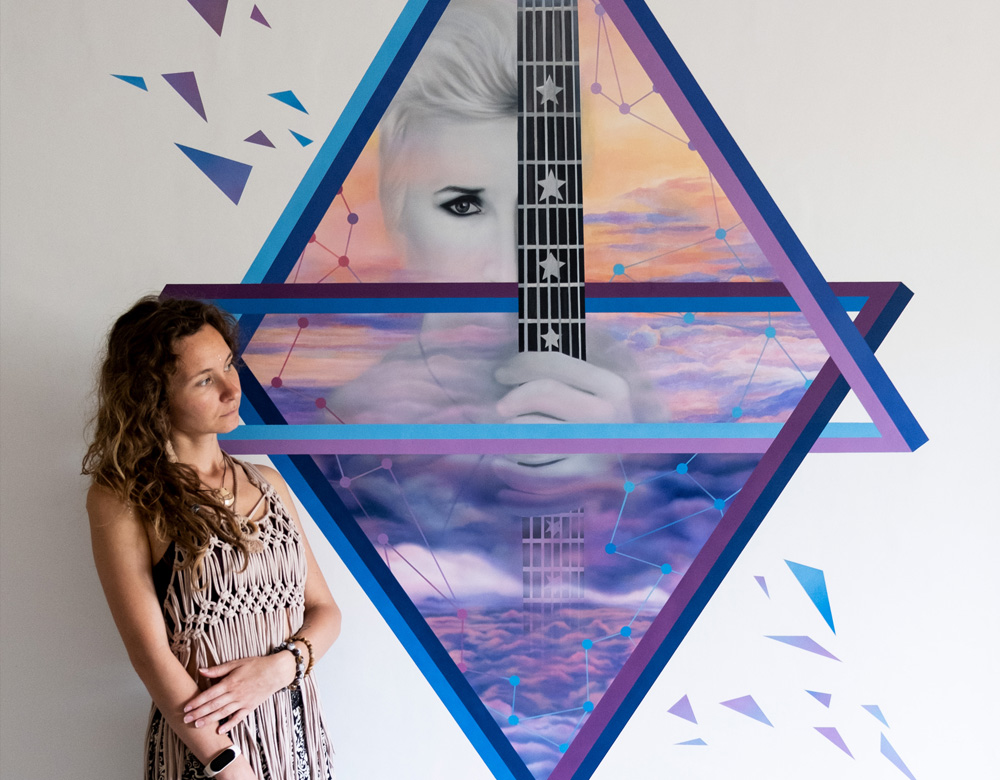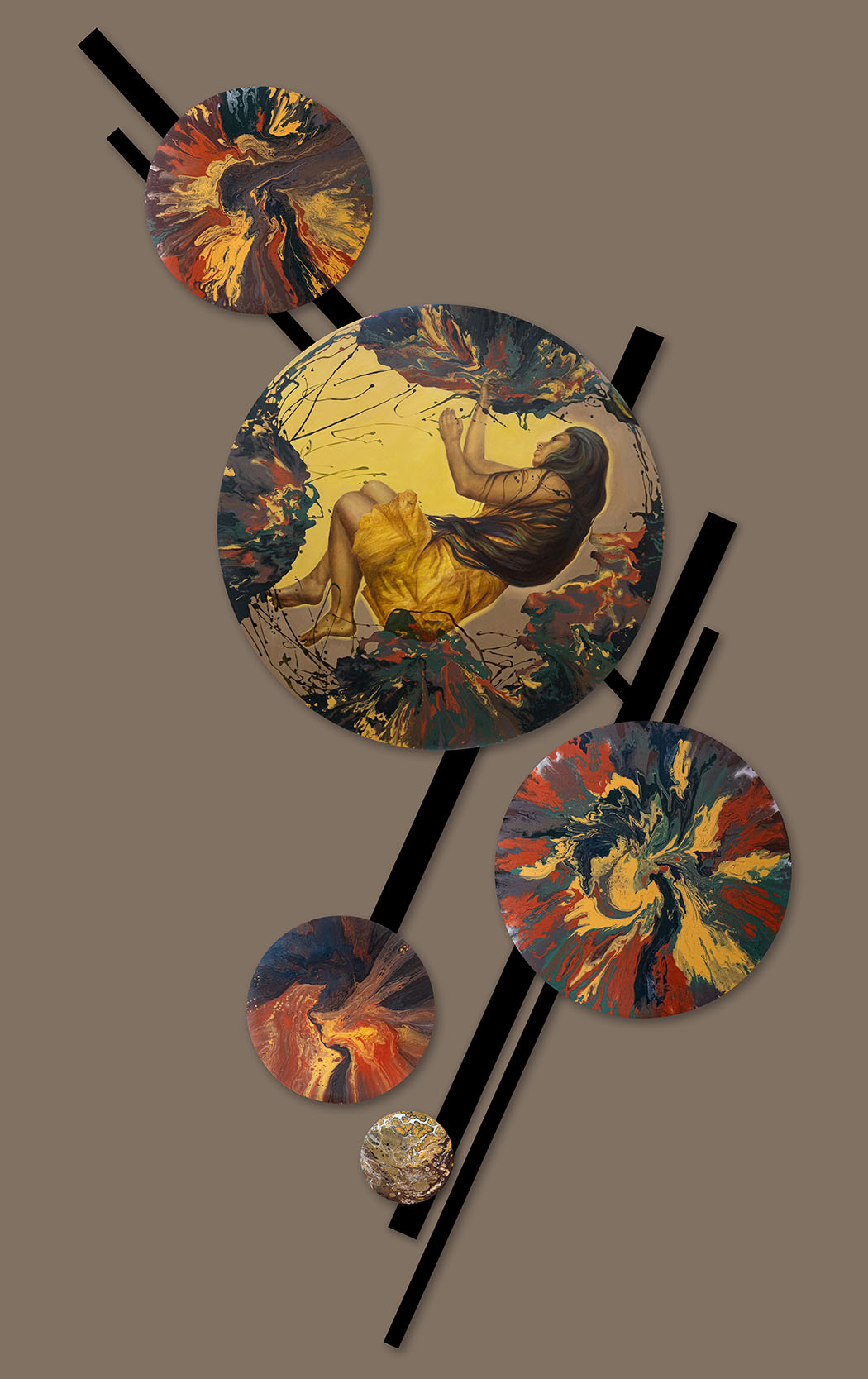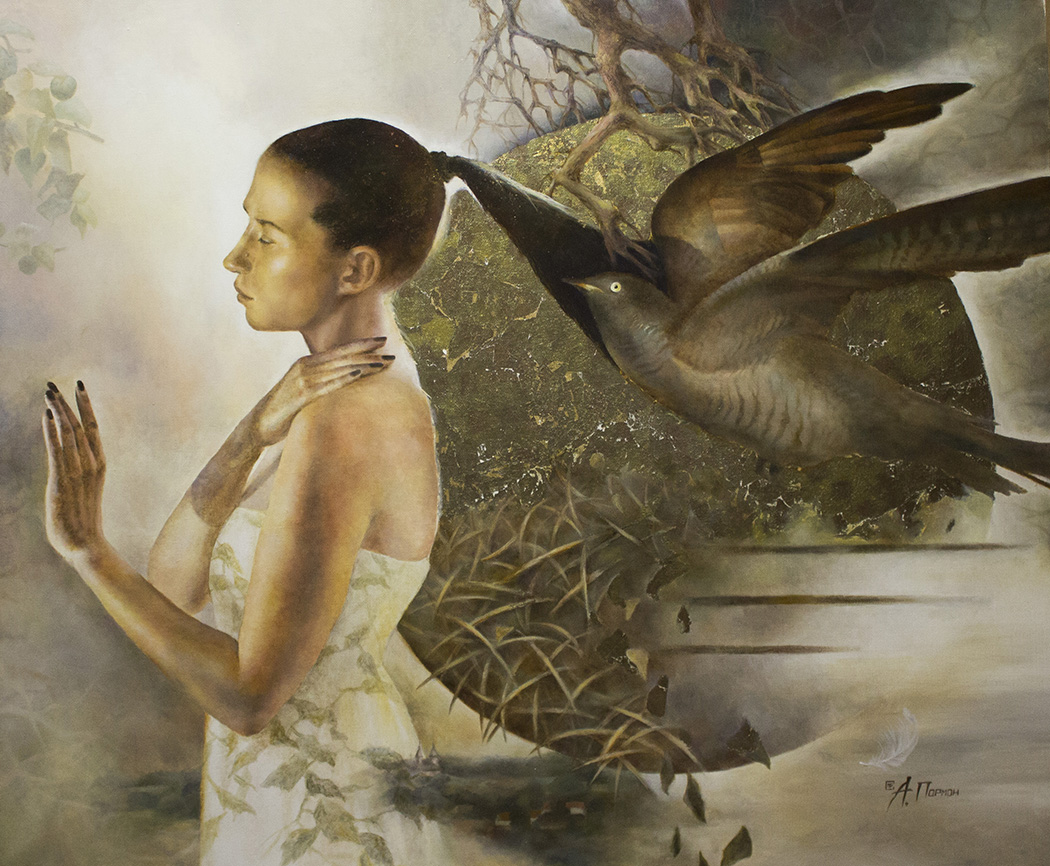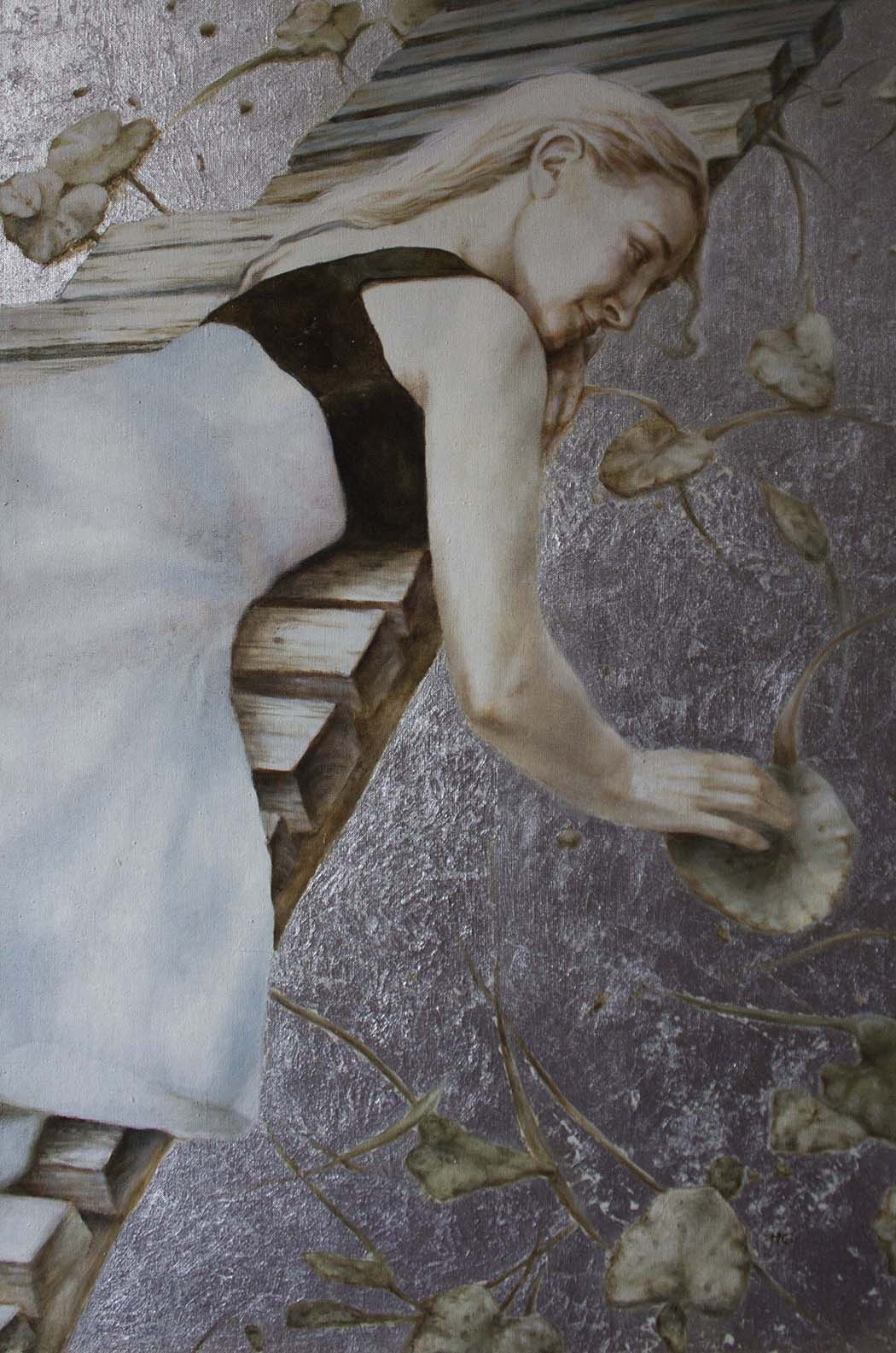Parmon Alexandra
Year of birth: 14.02.1991.
Your education:
2006 – 2010: Minsk State Art College named after A.K. Glebov, specialty: Designer.
2010 – 2016: Belarusian State University of Culture and Arts, specialty: Artist of Decorative and Applied Arts.
2014-2015: Institute of Design and Decorative and Applied Arts in Saint Petersburg, specialty: Artist of Decorative and Applied Arts.
2016: European Academy of Arts. Studied in Warsaw on a grant.
Describe your art in three words: experimental, sensual, meaningful.
Your discipline: painting, mural and facade painting.
Website | Instagram

Can you tell us about your educational journey and how it has influenced your artistic practice?
I have gone through a very long and fairly standard educational path for an artist. Art school, art college, several universities. After graduating from university, I realized that my level wasn’t sufficient, so I continued to study individually in the studios of artists, receiving knowledge directly from master to student. All these years have greatly influenced me both as a person and as an artist, nurturing me step by step. Nothing came easy; there were difficulties, but I confidently moved towards my goal and dream. I had more than 100 teachers with whom I had to work, and each left a piece of themselves in my development as a master. I have several specialties, such as design, photography, and decorative and applied arts. During my studies, I was able to try many different materials, techniques, and styles, which helped me decide on the direction in which I wanted to continue developing.
Your artwork spans various mediums, including painting, graphic art, photography, body art, and mural painting. How do you decide which medium to use for a particular project?
Yes, indeed, I work in various media. The idea and the method of its realization often go hand in hand. Sometimes the concept comes from the client, a residency, for example, or the project organizer, and in that case, the material is already predetermined. If I am the initiator of the project, I choose the medium that fully reveals the concept. Here, I rely on my inner instinct and response.
 Parmon Alexandra | Rem Fhase | 2024
Parmon Alexandra | Rem Fhase | 2024
You mention that your painting technique is inspired by old masters and involves layering with long drying times. Can you explain this process in more detail?
I really love the technique of the old masters, especially the Dutch method. This technique allows for working from start to finish without errors or corrections, addressing one task at a time rather than all at once. It also gives the painting an internal glow, a sense of being handcrafted, with smooth transitions and softness. Such paintings have survived since the 15th century, and there’s a high probability that paintings created with this technique today will also last for a long time. Unfortunately, this technique requires long drying times for the layers, from one to two weeks, which is impossible within the framework of an academy, so this technique has largely been lost and is rarely used. A painting takes at least a year to complete; old masters often painted for 10-15 years, and some even for a lifetime, like Leonardo da Vinci with his Mona Lisa. This also has to be explained to clients, as there is a significant difference between this technique and, for example, alla prima, where a painting can be completed in a few days, while my execution time is at least a year. My last commissioned canvas took me 2.5 years to complete.
How do modern styles and techniques influence your traditional painting methods?
They have a strong influence. Most likely, because my education is not purely in painting, my thinking is more formal, and there is also an influence from contemporary artists. I chose painting as my medium because I really love the process, but I also try to use all its possibilities.
 Parmon Alexandra | Mirror | 2018
Parmon Alexandra | Mirror | 2018
What themes and subjects inspire your work the most, and how do you incorporate them into your art?
I am inspired by the world around me, bright people, the sincerity of children, the beauty of the human body and nature, the constantly changing feelings and events of life. Simply being in a body and experiencing each moment is an inexhaustible source of inspiration for new paintings. The main theme of my work is the supernatural, the exploration of the inner world of a person, their dreams, fantasies, and sensations, as well as the phenomena and circumstances they encounter. I am inspired by the study of topics in quantum physics, lucid dreaming, and psychoanalysis.
Can you share more about your art studio “Almira” in Minsk and the type of education you provide there?
I opened my art studio in 2010. Over this time, more than 1,000 students have passed through it. At the moment, we have a wonderful, well-coordinated team. Several teachers work here. We have groups for the creative development of children, where the focus is on compositional sense, color perception, the ability to stylize, fantasize, and create their own worlds and stories. I prepare children and teenagers for admission to creative universities and colleges in our country and abroad. With many of them, we have developed such close relationships that we continue to communicate even after their admission and after they have already graduated. Some of my students are now established artists. I mainly prepare them for specialties such as design and architecture, but there are a few who pursue painting.
 Parmon Alexandra | By The Lake | 2018
Parmon Alexandra | By The Lake | 2018
How do you balance your roles as an artist and an educator?
I work as a teacher because I can’t help but do it; I feel it’s my calling to pass on knowledge. I have an 85-98% success rate for those who apply, and I have very warm relationships with my students, with many turning into strong friendships. Sometimes our lessons go beyond just drawing lessons; we touch on various topics, communicate, and enrich each other.
However, this takes up a lot of time and effort, so I have to sacrifice time for painting. But this doesn’t upset me because I teach only a few days a week, which gives me inspiration, and the rest of the time, I paint and draw. I believe that a teacher should first and foremost be a good artist themselves, and then a teacher. That’s why I always strive to develop myself, grow, and learn.

Leave a Reply